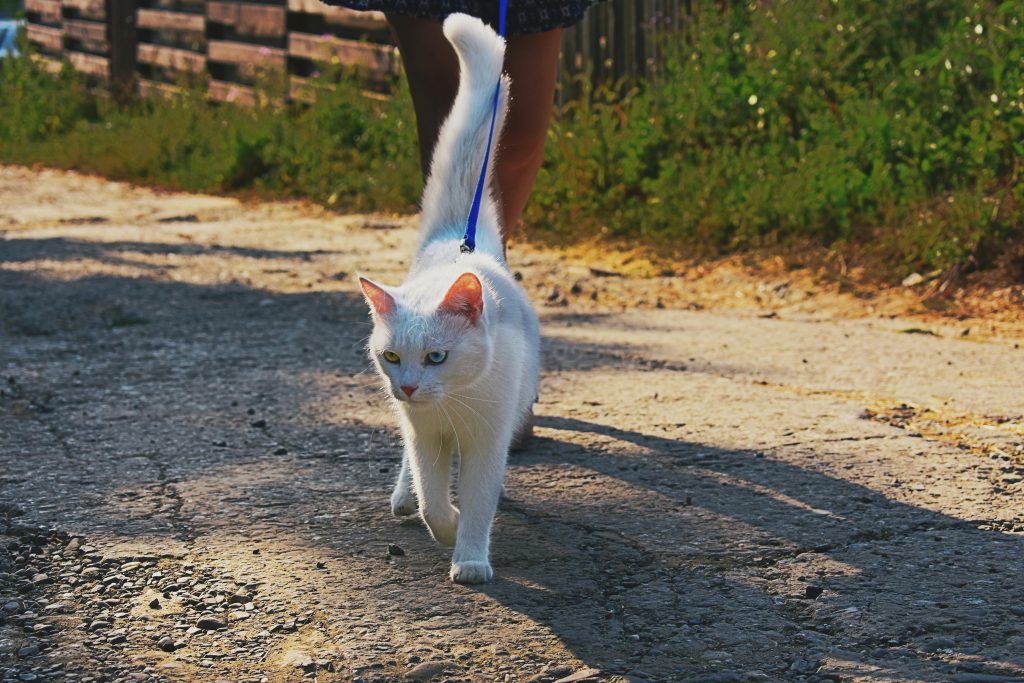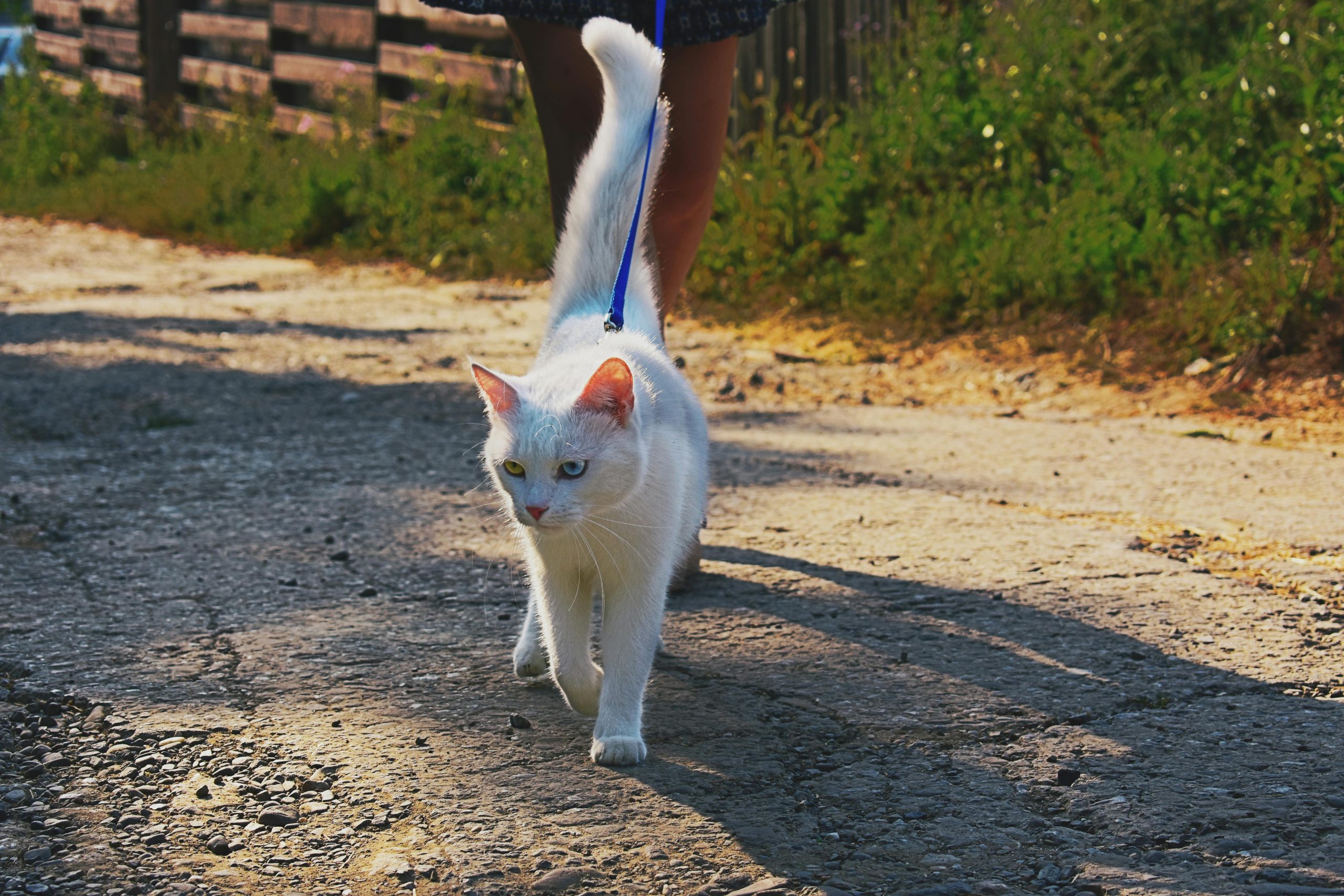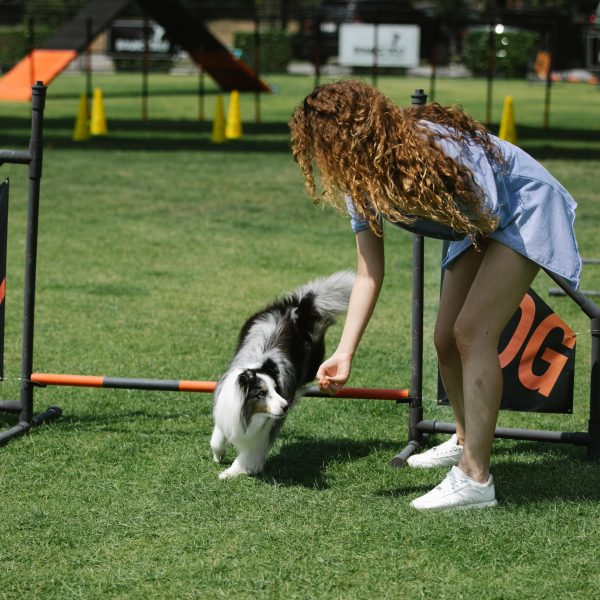Taking your kitty for a stroll on a leash may seem out of the ordinary, but it’s actually a great way to keep them mentally and physically engaged. Leash training can offer your cat a chance to explore and exercise in new ways. Unlike dogs, cats need a patient approach when it comes to leash training. This guide will walk you through the process of teaching your cat how to walk on a leash.
1. Selecting the Gear
Before diving into training, it’s essential to have the appropriate gear. A harness specifically made for cats is key. Unlike collars that can be uncomfortable or risky for felines, harnesses distribute pressure evenly across their bodies, reducing the chances of harm. Opt for a comfortable and secure harness. The leash should be light and long enough to give your cat some freedom while keeping them under control.
2. Introducing the Harness at Home
The initial step in leash training involves helping your cat get accustomed to wearing a harness. Begin by placing the harness near where they sleep or eat so they can check it out at their pace. Start by putting the harness on your cat for short periods while indoors. Offer plenty of treats and praise to create a positive association. If your cat shows resistance, avoid forcing the harness on them. Instead, try again later or on another day.
Next, practice having your cat wear the harness indoors for longer periods once they are comfortable with it. Allow them to move around freely in the house, letting them get used to the feel of the harness. Continue rewarding your cat with treats and affection during this time to reinforce a positive experience. Watch how your cat reacts. If they appear distressed or uncomfortable, remove the harness and try again later.
After your cat is comfortable wearing the harness, introduce the leash by attaching it while indoors. Let your cat drag the leash around behind them to help them adjust to its feel without feeling controlled by it. Monitor your cat closely during this time to prevent any tangling or fear.
3. Practicing Walks Indoors
When your cat is accustomed to both the harness and leash, start practicing indoor walks. Remember to hold the leash loosely and let your furry friend take the lead. Cats are naturally independent creatures, so it’s best to allow them to explore at their own pace. Keep the training sessions short and positive, rewarding any progress with treats and praise. If your cat hesitates or stops during the walk, avoid tugging on the leash, as this could make them anxious. Instead, try using treats or toys to guide them in the desired direction.
4. Transitioning to Outdoor Walks
As you transition to outdoor walks, choose a secure environment for your cat’s first outdoor adventure, like a fenced backyard or a peaceful garden. The great outdoors can be overwhelming for felines, so start by letting them explore near the door before gradually increasing the distance and duration of your walks as they grow more comfortable.
5. Prioritizing Safety and Comfort
Leash training takes time and patience, and every cat is unique—some may embrace it quickly, while others may require more time to adjust. Stay patient and follow your cat’s lead during training sessions, paying attention to their body language. When your cat shows signs of stress, like flattened ears, dilated pupils, or a flicking tail, it might be a good idea to give them a break.
Safety should always come first when taking your cat for a walk on a leash. It’s best to avoid streets, loud noises, or encounters with unfamiliar animals that could scare your cat. Make sure to keep them on a leash in safe areas to prevent them from running off or getting into trouble.
6. Making the Experience Positive
To successfully train your cat to walk on a leash, focus on creating positive experiences. Use treats, praise, and gentle encouragement throughout the training process. Never push your cat into something they’re not comfortable with, as it could make them associate the leash and harness with negativity. If your cat seems hesitant about leash training, consider trying out other activities like interactive toys or giving them access to window perches for mental stimulation.
With dedication, patience, and the right approach, both you and your furry friend can enjoy the rewards of leash training together. Taking your cat for a walk in the garden or a visit to a park can be a delightful experience for both of you. It’s an opportunity to strengthen your bond with your feline friend, give them some exercise, and satisfy their curiosity about the world outside your home.
Training a cat to walk on a leash presents its challenges, but it can also be highly fulfilling. By following these guidelines and prioritizing your cat’s comfort and safety, you can help them explore the outdoors in a positive manner. Remember, patience and positive reinforcement play crucial roles in ensuring that both you and your cat enjoy the experience.








